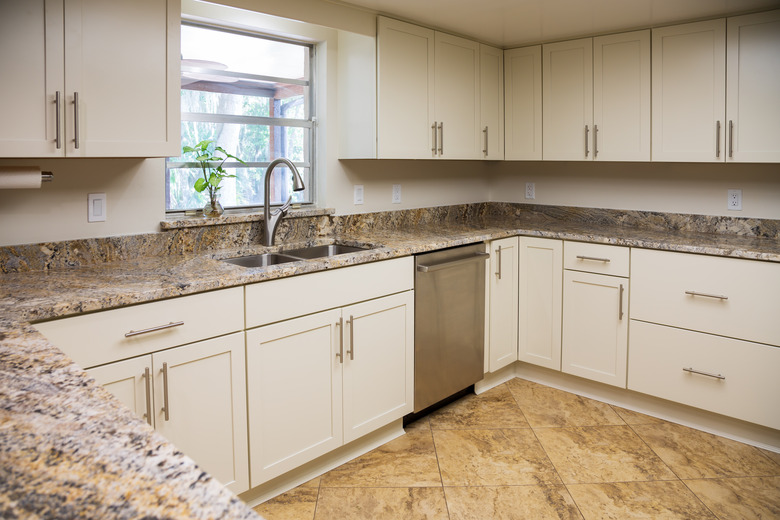How To Remove Rust Stains From Granite
We may receive a commission on purchases made from links.
Due to the nature of the stone, rust stains on granite are quite common. It's an often overlooked fact that granite and other natural stone products frequently contain veins or deposits of iron. When this iron meets water on a kitchen or bathroom countertop, rust is the natural result. Even if you're careful about what you set on your granite countertops, rust stains can attack from within.
The Good News
The Good News
The fact that rust can come from within your countertop itself doesn't mean that rust is inevitable. To protect against it, make sure you seal your granite with a high-quality stone sealant three or four times a year. Sealant helps prevent rust stains by creating a barrier between water and any iron deposits in the granite. It also protects the porous stone from rust stains that come from something on the counter rather than in it, preventing that rust from entering the stone.
You can further protect your countertops by keeping them dry. Dry them off after cleaning them or otherwise making the surface wet. If you use a dish drainer, make sure to put a tray underneath it to catch dripping water. These simple measures can go a long way toward protecting your granite.
How to Remove Rust Stains From Granite
1. Try a Granite Cleanser
If you've kept up with sealing your granite, removing rust stains can be easy. A commercial stone cleaner may do the trick and solve your rust problem in a matter of minutes.
- Apply the cleanser to the stain, doing so according to the manufacturer's instructions.
- Scrub the surface with a nylon brush or a gentle scrubbing pad using a circular motion. Don't use steel wool or other products that can scratch the granite.
- Rinse away the granite cleaner. If the stain is still present but getting lighter, repeat the cleaning process.
- Seal your granite after removing the rust stain.
2. Apply a Poultice
A poultice is a cleaning paste that absorbs stains as it dries. You can purchase a commercial granite-cleaning poultice or make your own.
- Mix water and baking soda to form a paste the consistency of peanut butter. Don't add vinegar, lemon juice, or other acids to the poultice as acids can damage granite countertops.
- Spread the baking soda poultice over the stain. You want to cover the stain completely but leave the poultice as thin as you can. Applying it in a thick layer makes the poultice take longer to dry but doesn't enhance its cleaning power.
- Place plastic wrap over the poultice and tape the sides down to the countertop.
- Leave the poultice on the stain for 24 hours and check it. If it's dry, you can keep going. If it's not, leave it to sit for another 12 hours.
- Remove the dried poultice and rinse the countertop.
- Dry and seal the granite.
3. Reach for the Hydrogen Peroxide
When all else fails, there's one more trick you can try to remove the rust stain. This should be used as a last resort, but sometimes hydrogen peroxide can remove rust staining. If hydrogen peroxide fails too, it's time to call in a professional to treat the stain.
- Pour some 3 or 4 percent hydrogen peroxide into a spray bottle.
- Spray the rust stain liberally.
- Scrub the area with a soft nylon brush to work the hydrogen peroxide into the surface of the stone.
- Allow the hydrogen peroxide to sit on the stain for 24 hours.
- Rinse the hydrogen peroxide away and check the stain.
- Seal the counter if the stain is gone. If it isn't, call a granite professional for help.
